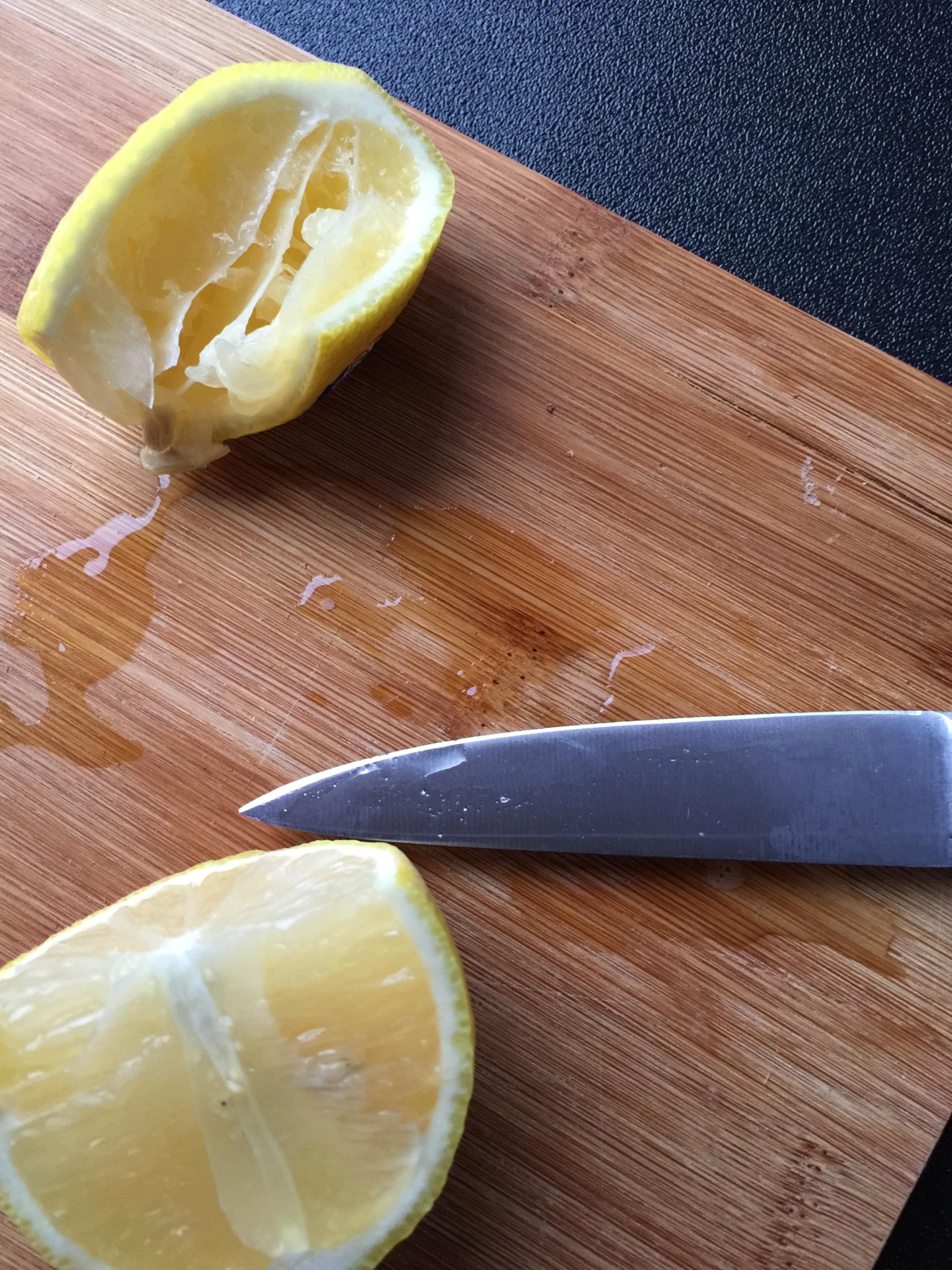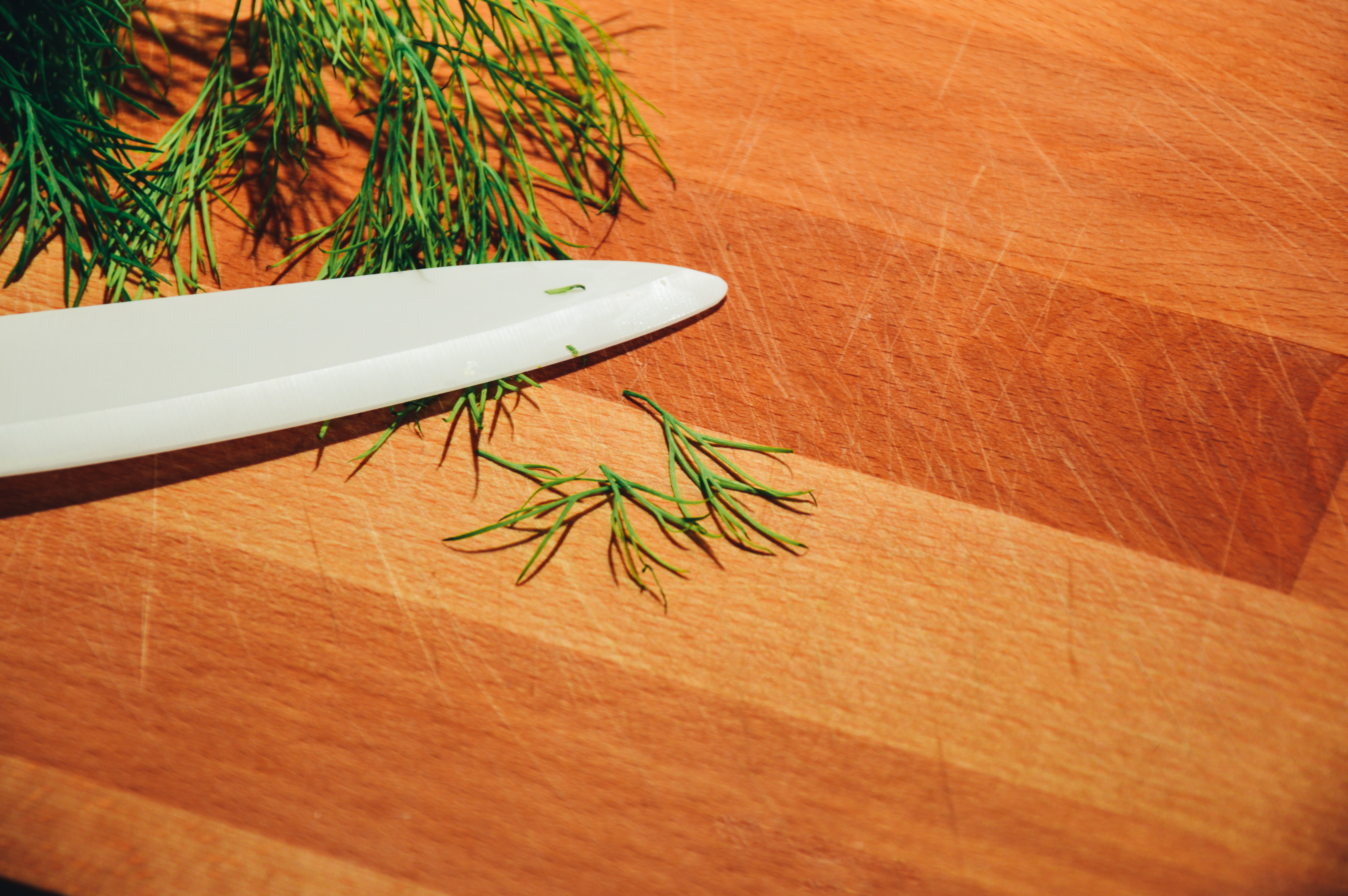Vegan Globetrotter is supported by our audience. When you purchase through one of our links, we may earn a small affiliate commission. As an Amazon Associate I earn from qualifying purchases. Your cost is not affected.
==================
Cutting boards are an essential part of any kitchen. They serve as a base for our culinary endeavors, from chopping vegetables to slicing meat. However, not all cutting boards are created equal. Different types, including plastic, glass, bamboo, and wood, are available, each with advantages and disadvantages.
Among these, wooden cutting boards are often favored for their durability and aesthetic appeal. They are known to be gentle on knives, keeping them sharp for extended periods. However, wooden cutting boards require special care and attention in terms of cleaning and maintenance. Moreover, one of the most common questions among users of wooden cutting boards is: “Should I use chlorine bleach on a wooden cutting board?” This question has stirred significant debate in the culinary world, with various experts and enthusiasts weighing in with their opinions and experiences.

Image Source: FreeImages
The Debate: Should I Use Bleach on Wooden Cutting Boards?
You’re not alone if you’re wondering whether you should use bleach on wooden or plastic cutting boards together. The answer to this question is more complex than it may seem. On one hand, bleach is a powerful disinfectant, capable of killing bacteria and other harmful organisms. It’s commonly used in many households for cleaning and disinfecting purposes.
On the other hand, some argue that bleach can be too harsh for wooden cutting boards. They point out that it can cause the wood to become dry, brittle, and prone to cracking. This not only affects the board’s functionality but also its lifespan. Additionally, there are concerns about chemical residues that might remain on the board’s surface after cleaning, possibly contaminating food.
The Science Behind Disinfecting Wooden Cutting Boards
The primary reason for cleaning and disinfecting cutting boards, especially after preparing raw meat, is to eliminate harmful bacteria. These microorganisms, such as E. coli and salmonella, can cause foodborne illnesses if ingested.
The process is a bit more complex regarding wooden cutting boards. Wood is a porous material with tiny holes that can harbor bacteria. However, studies have shown that these bacteria are drawn into the inner layers of the wood, where they eventually die off.
Bleach, with its disinfecting solid properties, can effectively kill these bacteria. However, it doesn’t discriminate between good and bad bacteria, eliminating all in its path. This can disrupt the natural bacterial balance of the wood, potentially leading to an overgrowth of harmful bacteria in the future.
Safe and Effective Ways to Clean a Wooden Cutting Board
While bleach can effectively disinfect a wooden cutting board, it’s not the only method available. There are safer and equally effective ways to clean a wooden cutting board that won’t jeopardize its integrity or your health.
One popular method is using vinegar, soap, and water. Vinegar is a natural disinfectant that can kill most bacteria. Mix one vinegar with four parts water and scrub the cutting board thoroughly.
Another method involves using hydrogen peroxide, which is also a powerful disinfectant. It’s gentler than bleach and doesn’t leave behind any harmful residues. Pour the hydrogen peroxide on the cutting board and let it sit for a few hours or minutes before rinsing.
The Dos and Don’ts of Wooden Cutting Board Care
Taking care of a wooden cutting board requires regular cleaning and maintenance. Here are some dos and don’ts to keep in mind.
Do clean your cutting board after every use. Keep food residues from sitting on the wooden board or surface briefly, as they can breed bacteria. Please don’t put your wooden cutting board in water or put it in the dishwasher. Wood absorbs moisture, which can cause it to warp or crack.
Do oil your cutting board regularly. This helps to keep the wood hydrated and prevents it from drying out and cracking. Don’t use a knife to scrape off food residues. This can create deep cuts in the wood where bacteria can hide.
Comprehensive Guide: How to Wash a Wood Cutting Board
To properly wash a wood cutting board, scrap any food residues with a bench scraper or spatula. Rinse the board under warm running water. Avoid using hot water, as it can cause the wood to warp.
Next, clean the board using a sponge or cloth and a mild detergent. Scrub the surface thoroughly, getting into all the nooks and crannies. Rinse the plastic cutting board and dry it immediately with a clean towel. Never leave your wooden cutting board to air dry, as it can absorb moisture and warp.
Tips on How to Take Care of a Wooden Cutting Board
Taking care of a wooden cutting board extends beyond regular cleaning. Here are some additional tips to help maintain your plastic cutting board’s longevity.
Regularly oil your cutting board with food-grade mineral oil. This helps to hydrate the wood and prevent it from drying out.
Please don’t use your wooden cutting board for raw meat. This can introduce harmful bacteria into the wood, which can be challenging to remove.
Please store your wood cutting boards and board in a dry place. Excessive humidity can cause the wood to warp and crack.

Alternatives to Bleach for Cleaning Wooden Cutting Boards
There are several alternatives to bleach for cleaning wooden cutting boards. Vinegar, hydrogen peroxide, and baking soda are natural disinfectants that clean your cutting board with bleach without damaging the wood or leaving harmful residues. Another alternative is a lemon and salt scrub.
The acidity of the lemon helps to kill bacteria, while the salt in warm water acts as a gentle abrasive, removing food residues and stains.
Expert Opinions on Cleaning and Disinfecting Wooden Cutting Boards
Experts generally agree that the bleach solution should be used sparingly, if at all, on wooden cutting boards. While it’s effective at killing bacteria, it can be too harsh for the wood and potentially harmful if residues are left behind.
Instead, they recommend using natural disinfectants like vinegar and hydrogen peroxide. These are gentler on the wood and won’t leave behind harmful residues.

Video Credits: America’s Test Kitchen
To Bleach or Not to Bleach Wooden Cutting Boards?
In conclusion, using bleach on a wooden cutting board remains a personal choice. While it’s an effective disinfectant, there are potential risks to the wood and your health.
Fortunately, there are safer and equally effective alternatives available. Methods like using vinegar, hydrogen peroxide, or a lemon juice and salt scrub, coupled with proper care and maintenance, can ensure that your wooden cutting board remains clean, safe, and durable for many years of culinary adventures.
Remember, the key to a long-lasting wooden cutting board is regular cleaning, proper maintenance, and mindful use. So whether you decide how to bleach cutting boards or not to bleach, make sure you’re giving your wooden cutting board the care it deserves.
Frequently Asked Questions on Understanding Cutting Boards
Is It Necessary to Bleach My Cutting Board?
No. Bleaching your cutting board is a personal choice. There are pros and cons to bleaching your board, which you need to consider. Remember that you may choose not to bleach your board – which is fine! Our article above explains your other choices if you would like to avoid bleaching your board.
How Can I Maintain a Clean Cutting Board Without Bleach?
Bleaching your boards is one of many ways to clean them. What you can do is to regularly wash cutting boards with hot, soapy water after each use. Sanitize them periodically using bleach or alternative methods, especially after cutting raw meats. Make sure to dry them thoroughly after cleaning to prevent moisture-related issues.
What Type of Bleach Should I Use?
Use regular household bleach that contains sodium hypochlorite as the active ingredient. Please ensure it is not scented or enhanced with other chemicals, as these can be harmful if left on surfaces that come into contact with food.
How Long Should I Leave the Cutting Board in the Bleach Solution?
It’s generally recommended to leave the cutting board in the bleach solution for around 2-3 minutes to ensure proper disinfection. Please don’t leave it for an extended period, as this can damage the board.
Can I Bleach All Types of Cutting Boards?
Sadly, not. It’s important to note that bleaching can damage some cutting boards, especially wood ones. Wooden cutting boards can absorb bleach, leading to odors and potentially affecting the wood’s integrity. It’s generally safer to use bleach on plastic or non-porous cutting boards.
🌱 Discover a World of Vegan Delights with VeganGlobeTrotter! 🌍
Are you ready to embark on a journey that tantalizes your taste buds, nurtures your body, and supports our planet? Look no further than the vibrant world of VeganGlobeTrotter – your ultimate destination for all things vegan!
🌱✨ 🥗 A Feast for Your Senses: Immerse yourself in a kaleidoscope of flavors, aromas, and textures as we take you on a global culinary adventure. From mouthwatering plant-based recipes inspired by diverse cultures to innovative cooking tips that celebrate the beauty of natural ingredients, our Facebook page is your passport to an endless array of delicious possibilities.
🌎 Explore the Planet, Compassionately: VeganGlobeTrotter isn’t just about food; it’s a philosophy that embraces ethical living and compassion for all beings. Discover heartwarming stories, insightful articles, and engaging discussions that delve into veganism’s environmental, health, and ethical aspects. Join us in making conscious choices that resonate with a sustainable and compassionate lifestyle.
📸 Visual Feasts Await: Get ready to feast your eyes on stunning food photography that captures the essence of each dish. Our Instagram and Pinterest accounts are a treasure trove of visual inspiration, showcasing the artistry and creativity that goes into crafting delectable vegan masterpieces. You might reach for your apron to recreate these culinary wonders in your kitchen!
🎉 Stay In the Loop: Never miss a beat regarding exciting vegan events, new product launches, and the latest trends in the plant-based world. Our Facebook page and Twitter accounts keep you updated with all the buzz, ensuring you’re always in tune with the dynamic and ever-evolving vegan landscape.



Don't miss out
when new recipes and information are added!
Join our newsletter for free recipes,
healthy living inspiration, and special offers
You have Successfully Subscribed!